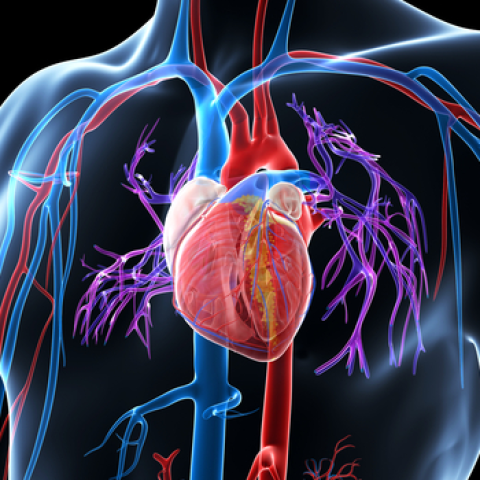Interdisciplinary Initiatives Program Round 8 - 2016
Eric Appel, Materials Science & Engineering
Joseph Woo, Cardiothoracic Surgery
Our goal is to develop a transformational treatment strategy for regenerating dead heart tissue after heart attack. Heart disease is a leading cause of death in the United States and current treatments for heart failure exhibit both high in-hospital mortality rates (5-6%) and one-year mortality rates (7-18%). A promising alternative to treat heart failure is through the use of stem cell therapy to mitigate long-term cardiac damage and to regenerate the infarcted myocardium. Yet, limited survival of the native tissue and transplanted cells on account of the lack of oxygen and essential nutrients in the infarcted tissue contributes to only modest improvements in cardiac function. A cell-based therapy capable of maintaining normal levels of oxygen and essential nutrients in infarcted cardiac tissue would be transformational. Our interdisciplinary team will develop a novel injectable hydrogel platform that is polysaccharide-based and oxygen-carrying. These materials will allow simultaneously for encapsulation of therapeutically relevant cells (e.g., induced pluripotent stem cell-derived cardiomyocytes) and controlled delivery of both oxygen and glucose to the infarcted tissue of the heart. This treatment strategy will prolong cardiomyocyte survival, thus protecting native cardiac tissue, while maintaining exogenous stem cells to allow for regeneration of ischemic heart tissue. The key concept exploits supramolecular hydrogel biomaterials capable of minimally-invasive implantation in the body through direct injection or catheter-based delivery. Preliminary results with these materials indicate that their mild formation (simple mixing of two polymeric components) allows for encapsulation of cells, while their unique flow properties through a syringe needle or catheter protects the cells from mechanical damage during injection, thus imparting enhanced cell viability and retention in the tissue of interest following implantation. We will synthesize hydrogels comprising polysaccharides known to release glucose upon biodegradation in the body and formulate them with oxygen-containing microparticles capable of sustained oxygen delivery. Thus, upon implantation, our materials will release both oxygen and essential nutrients locally in the infarcted heart tissue. We will use small and large animal models of myocardial infarction to validate the ability of this novel therapeutic approach to mitigate hypoxia-related damage to the heart, enhance stem cell viability and regenerative capacity, and improve long-term cardiac performance following heart failure.



